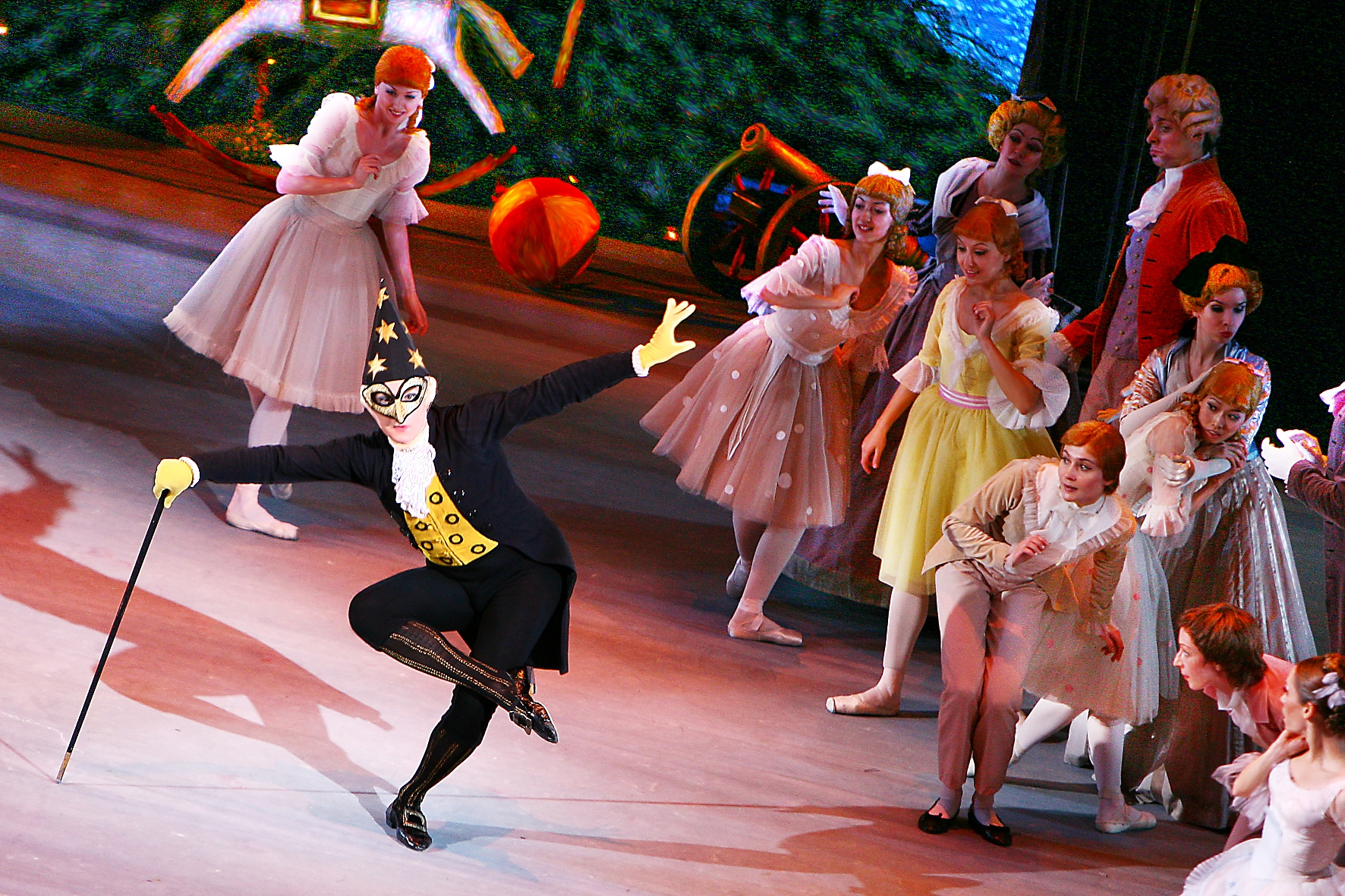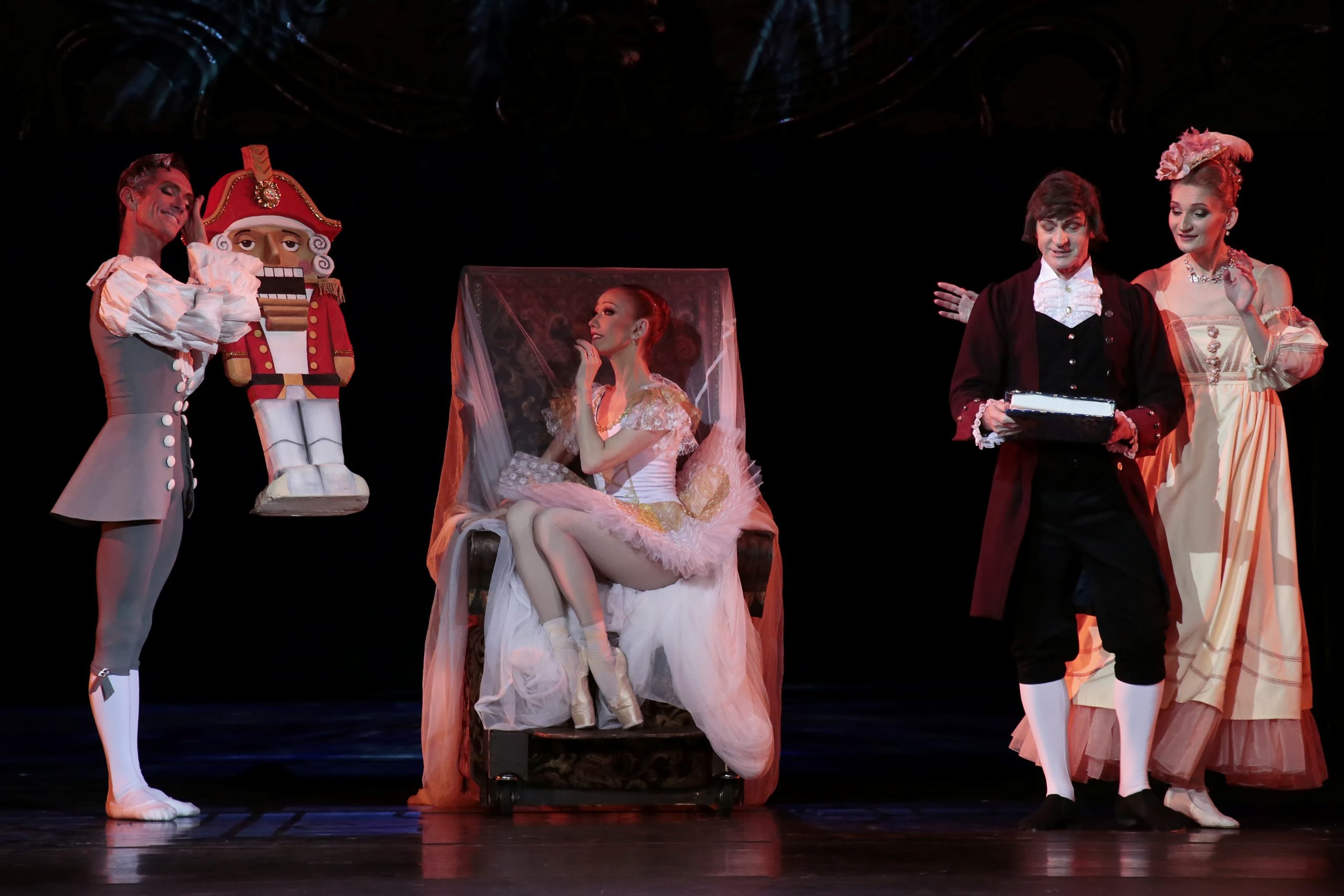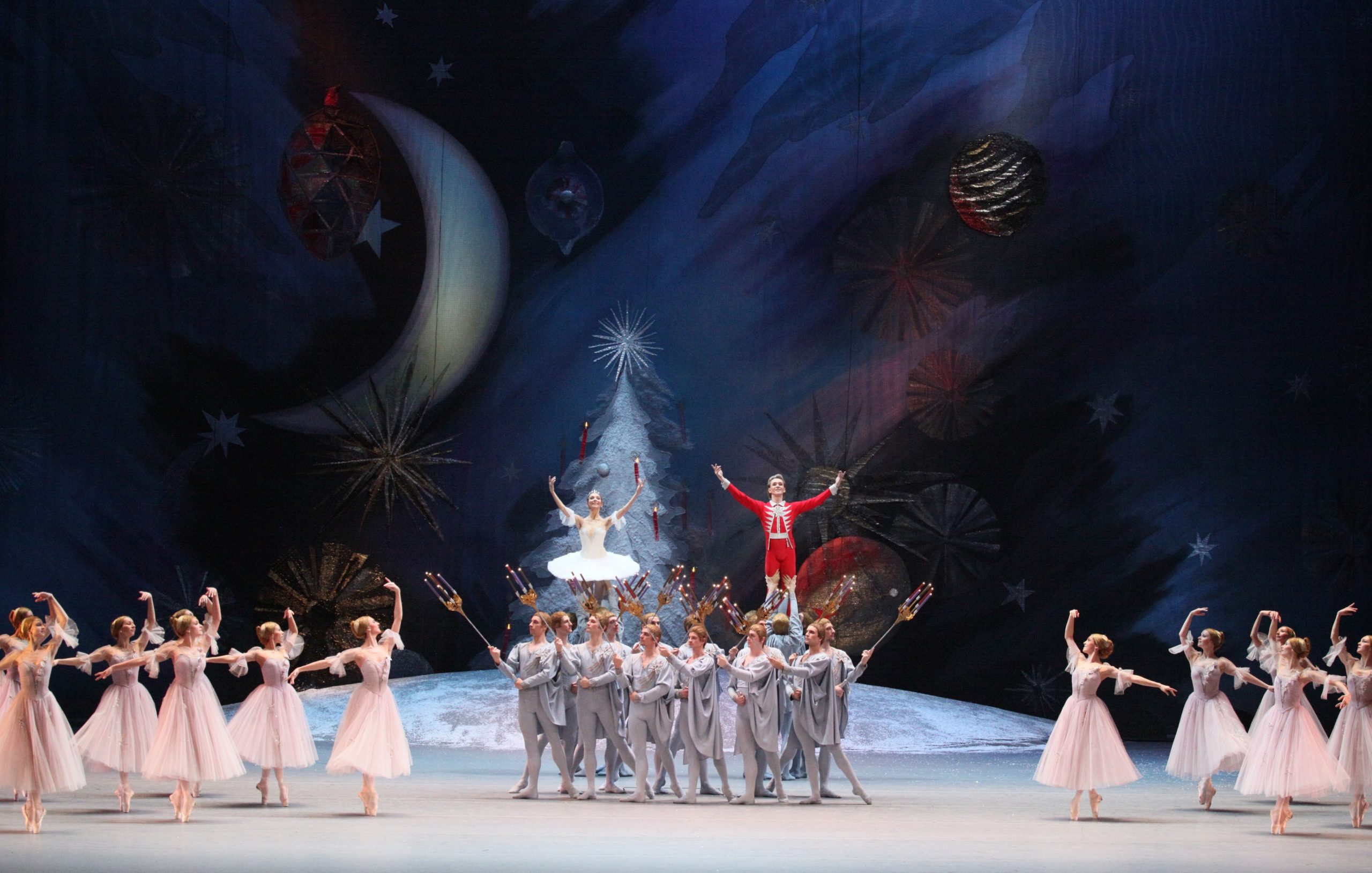P. I. Tchaikovsky: ‘Life has only charm when it consists of alternating joys and sorrows, of the struggle between good and evil, of light and shadow…’
By Sergei Makin
Modest Tchaikovsky, Pyotr Ilyich’s younger brother, wrote in the composer’s biography: ‘He was mainly captivated by the fantastic aspect of ballet and did not like ballets without transformations and flights. From frequent visits to ballet, however, he acquired an understanding of the technique of dance art and appreciated the “balloon”, “elevation”, “hardness of the toe” and other intricacies.’
Ballet mania among the then Russian intelligentsia, which was prone to utilitarianism, was not a universal craze and was not commended. One of the prominent Russian journalists reproached the music critic Herman Laroche, a friend of Tchaikovsky: ‘You shouldn’t idealise ballet like that. Ballet exists to arouse the extinct passions in the older.’
But Tchaikovsky was a ballet lover from his youth. So, he set about composing his third ballet.
Marius Petipa described the various parts of the future The Nutcracker for the composer:

‘Part 12. Clara and Fritz are happy. They thank their godfather and want to take away the toys. Cheerful graceful andantino – 16 bars. Their parents forbid it – such beautiful toys are not played with. Andantino gets more serious – 8 bars. Clara cries! Fritz plays up. This happens to the music of the last 8 bars. To console them, the old counsel (Drosselmeyer. – S. M.) takes out a third toy from his pocket. This is the Nutcracker. At least it can be played with. Andantino is more lively – 8 more bars.
‘Part 13. Clara is delighted with the doll. Now starts the polka tempo. Clara wonders what the gift is designed for. The counsel takes a hazelnut and cracks the shell with the Nutcracker. The music goes “crack-crack”, all to the polka tempo. Having heard the nut crack in the Nutcracker’s jaws, Fritz becomes interested in it and, in turn, wants to crack a nut with its help. Clara does not want to give him the Nutcracker. Her parents note that the Nutcracker does not belong to her alone. Clara lets her brother take her favourite doll and watches in horror as he forces it to crack two hazelnuts. Then he puts such a big walnut into its mouth that – “crack”! Its teeth are broken… All this happens to the polka – 48 bars.
‘Part 14. Fritz throws the toy aside while laughing. 8 bars of very lively music. Clara picks it up and tries to comfort her favourite toy with caresses. 8 bars of less lively and more affectionate music. She takes a doll off the bed and puts the Nutcracker in its place. All this is done during these 8 bars.’
In the new ballet, the parts of Fritz and Clara (later renamed Marie or Masha) were performed by children who studied choreography at the Imperial Theatre School. The great choreographer must have trained one of his youngest daughters, the talented Eugenia, for The Nutcracker. In the Soviet-French film about Petipa, The Third Youth (1965), the maestro’s little daughter is going to perform at the premiere of The Sleeping Beauty as Little Red Riding Hood. But she falls through the trapdoor of the stage and becomes crippled. At the first performance of the ballet, a basket of flowers hanging on a cable ‘dances’ instead of her. This is the screenwriter’s beautiful invention, whereas everything was different in reality, and it was not in The Sleeping Beauty. Vera Petipa, Eugenia’s sister, recalled the tragedy on the eve of The Nutcracker’s production: ‘A great tragedy befell our family. Even now I remember my parents’ grief when their second daughter Eugenia, my father’s hope, died: he believed her to be very capable. She died of sarcoma; her leg was amputated. The father was present at the operation. The suffering he had endured caused his nervous breakdown.’
Grief-stricken, Petipa gave the new ballet to Lev Ivanov. The day after the dress rehearsal of The Nutcracker, Tchaikovsky wrote to his brother Anatoly that the production was ‘even too magnificent – the eyes get tired of this splendour.’ But Vladimir Telyakovsky, the future director of the Imperial Theatres, was disappointed. Notably, he did not like the costumes of the performers: ‘After a number of such successful productions as The Queen of Spades and The Sleeping Beauty, there appeared an unthinkably tasteless production of Tchaikovsky’s ballet The Nutcracker, in the last scene of which some dancers were dressed like cakes from Filippov’s bakery. The costumes were correct, but very bad. Cakes can take a variety of shapes, but a young lady who looks like a cake is unattractive on stage.’
Journey to fairy’s kingdom
After Lev Ivanov Alexander Gorsky, Fyodor Lopukhov and Vasily Vainonen tackled The Nutcracker in Moscow and Leningrad, and George Balanchine in New York. Yuri Grigorovich at the Bolshoi Theatre surpassed everyone. The interpretation of his 1966 production is given by the stage director and ballet critic Boris Lvov-Anokhin in the book, The Grand Ballet Masters:
‘The whole action of the ballet unfolds as a fairy-tale “journey up a Christmas tree”, the desire to reach its top, where a mysterious star twinkles. <…> How to reach it, how to get it and touch it? So this simple image of sparkling, almost unattainable beauty in the ballet becomes the goal of the journey of Masha and the Nutcracker, a guiding star. <…>
The whole divertissement of specific dances forms a small suite of joy at victory. These dances are performed by puppets – Masha and the Nutcracker’s companions. They accompany them throughout the journey – kind, naïve and helpless. Animated puppets – lovely, beautiful and funny, but not yet endowed, like the Nutcracker, with the feelings of human courage and love.’

The central figure in Yuri Grigorovich’s ballet is Drosselmeyer. ‘In his image,’ Lvov-Anokhin notes, ‘some strange fairy-tale wisdom, which is kind and at the same time skeptical, is embodied. It seems that he could easily remove all obstacles in the characters’ way (after all, he is a wizard), but as if deliberately he puts them through all the trials, testing the power of their courage and love. He tests their souls with everything beautiful and terrible that is in a fairy tale and in life. He is both kind and crafty, omnipresent and inconspicuous, fantastic and funny. He is a master of puppets, an inventor of tricky springs that make puppet arms and legs move, their eyes open and their hearts beat. With this character Hoffmann comes into the play, albeit enlightened in accordance with Tchaikovsky’s music… A cheerful joker and a formidable lord of events, he instantly transforms everything: the Nutcracker’s funny dance turns into his death, an ugly doll turns into a handsome prince; but the prince disappears, and again a broken ugly doll remains in Masha’s hands.’
In Grigorovich’s production, the main characters come into Drosselmeyer’s possession, and there is a reason for this. And what meaning did Petipa and Tchaikovsky put into the ballet? According to Petipa’s script, the main characters find themselves in a realm without philistinism and torment, where a fairy reigns, dancing to music of magical beauty. The choreographer outlined this fragment for the composer:
‘Act 2. Part 16. pas de deux. Fee Dragee with Prince Orgead. Adagio, which should make a huge impression – 48 bars. Variation for the Cavalier – 48 bars on 6⁄8. Variation for a dancer 32 bars staccato on 2⁄4. In this music drops of water escaping from fountains are heard. End with very fast 24 bars. code. More live music on 2⁄4 88 bars.’
And Tchaikovsky created an unsurpassed masterpiece: a pas de deux with a variation of Fee Dragee. Contrary to a popular opinion, the great composer worshipped the feminine. The composer adored his mother who died prematurely. On 24th of October, 1879, in a letter to his friend and patroness Nadezhda Filaretovna von Meck, the composer confessed his love for his late parent: ‘Yesterday I found at my sister’s huge bundles of my letters to my parents, written once from St Petersburg when I was ten and eleven years old and found myself all alone in a big strange city. It is hard to describe what an exciting impression reading these letters made on me, carrying me almost thirty years back, vividly reminding me of my childhood suffering from longing for my mother, whom I loved with some painfully passionate love…’
Painfully passionate! Sigmund Freud would have definitely diagnosed it as a classic example of Oedipus complex. Pyotr Ilyich poured out his love for his mother in music. The artistic world of Tchaikovsky is filled with femininity to the point of matriarchy. It was especially evident in ballets. In Swan Lake, Siegfried is first and foremost the son of his mother, the Sovereign Princess (the prince’s father is not mentioned), and falls in love with the sublime manifestation of femininity – Odette. In The Sleeping Beauty the world is ruled by fairies: a good one and an evil one. In the first production of The Nutcracker, the characters entered the realm of a fairy. In Vasily Vainonen’s and Yuri Grigorovich’s productions Marie began to dance to the music of this variation.
Be like children
In his book The Passion According to Tchaikovsky, the Russian-American journalist Solomon Volkov discusses The Nutcracker with George Balanchine:
G. Balanchine: The Nutcracker is a ballet about Christmas. We had a brilliant Christmas in St Petersburg… True, Christmas is not Easter. On Easter the bells rang all night long! This is a special festival. But at Christmas St Petersburg was all dark and somehow strange. There was no such thing as now, when at Christmas everyone screams and runs out of breath, as if there were a fire. It was quiet here in St Petersburg, as if people were anticipating: who was born? Christ is Born! <…>
S. Volkov: When reviewing the premiere of Tchaikovsky’s ballet, Herman Laroche wrote: ‘Whatever you may say against children’s fairy tales, you cannot deny that we came to love them from childhood and they have entered deep into our imagination. You cannot deny that fairy tales contain some of the deepest ideas that excite mankind. And it is a fact that in the eyes of our contemporaries supposedly “children’s” fairy tales are becoming ever more those for adults, revealing their deep meaning.’ <…>
G. Balanchine: Tchaikovsky remained a child all his life, and he felt like a child. The German idea that a person in his highest development approaches a child was close to him. Tchaikovsky loved children as such, not as candidates for future adults. There is the maximum potential in children. This potential is not reached later, but is lost.
The Nutcracker in our theatre (New York City Ballet. – S.M.) is for big and small children. That is, for children and for adults who remained children. Because if an adult is a good person, then he remains a child in his soul. The main thing, the best thing in every person is what is left in him from childhood. <…>
It is hard for children to understand classical dance. They are used to talking, they need to have a story. But in The Nutcracker everything is clear, and children like it. Here The Nutcracker is more sophisticated than in St Petersburg – it is closer to Hoffmann. Our counsel Drosselmeyer is a more important figure. He comes, takes care of the children, and no one knows who he really is. And they love him because all children love mysterious adults. <…>
It seems to me that people like The Nutcracker so much because now everyone is interested in how children used to live and play. In my time, no one was interested. Nobody asked children how they lived or what they thought. Children just sought to become like adults as soon as possible – that’s all.
Terrible and wonderful dreams
In The Nutcracker a doll becomes a prince. Its background remains unknown. But in Hoffmann’s fairy tale the doll was a human being before becoming a toy. The mouse Queen bewitched the little princess Pirlipat. A way to save her was found. In Dumas père’s narration (Petipa used his version, and not Hoffmann’s original, for the libretto), the deliverance was supposed to be as follows:

‘To be freed from the enchantment that made her ugly and to become beautiful again she has only to eat the kernel of the nut Krakatuk, the shell of which is so hard that a 48-pound cannon can pass over it without crushing it. In addition, in the presence of the princess this nut must be cracked by a young man who has never shaved and has worn boots all his life. And finally, the young man must give the kernel of the nut Krakatuk to the princess with his eyes closed, and then, without opening them, take seven steps backward without stumbling.’
The magic nut is found by the mechanic Drosselmeyer, and his nephew performs the ceremony. The ugly princess turns into a young girl of angelic beauty. But, while walking backward, the young man stumbles and crushes the mouse Queen to death. With her last bit of strength she turns the young man into a toy for cracking nuts – the Nutcracker.
In 2020, the premiere of Krakatuk ballet was produced by Kasatkina and Vasilyov Moscow State Academic Classical Ballet Theatre on the Historical Stage of the Bolshoi Theatre. Reality in the performance is interspersed with dreams. After falling asleep the main character reincarnates as Princess Pirlipat; the mouse King, the mouse Queen’s son, proposes to her; and the wooden Nutcracker, presented to her by Drosselmeyer the day before, fights with him, turning into a handsome young man. The next day the girl sees Drosselmeyer’s nephew, whom she imagined as a prince in her dream.
In The Nutcracker by Mikhail Shemyakin (staged by the Mariinsky Theatre in 2001) there is a feeling of childhood nightmares and fear of the dark and monsters. The storyteller Drosselmeyer turned into a sinister sorcerer. Mice climb up a giant cake to sink their teeth into the sweets Marie and the Nutcracker standing on top. The result is something like doomsday: in a black-black ballet on a black-black stage black-black snowflakes are dancing, resembling black-black rats.
In Yuri Grigorovich’s ballet, there is another dream: that of light. The ballet historian Marina Konstantinova writes about this in her book entitled Ekaterina Maksimova:
‘In addition to the fact that Tchaikovsky’s score finally found its first incarnation commensurate with music, this ballet brought to viewers the light lyricism vital for their souls. Thanks to Tchaikovsky you could allow yourself these childhood dreams without being ashamed of sentimentality. The realm of The Nutcracker had its concerns and troubles, but it also had the peace of mind that gives you strength. The Nutcracker was not ashamed to be a performance in which viewers found their inner peace – not like in a vaudeville or an extravaganza, but what is possible only in a purifying wonderful dream that imperceptibly puts everything in its place. Thus we relax and gain strength at the sight of playing children and through memories of childhood and home Christmas holidays with a Christmas tree, when it becomes clear that
The future does not suffice.
The old and the new are not enough.
Eternity must become
A Christmas tree in the middle of the room.
(Boris Pasternak).’




